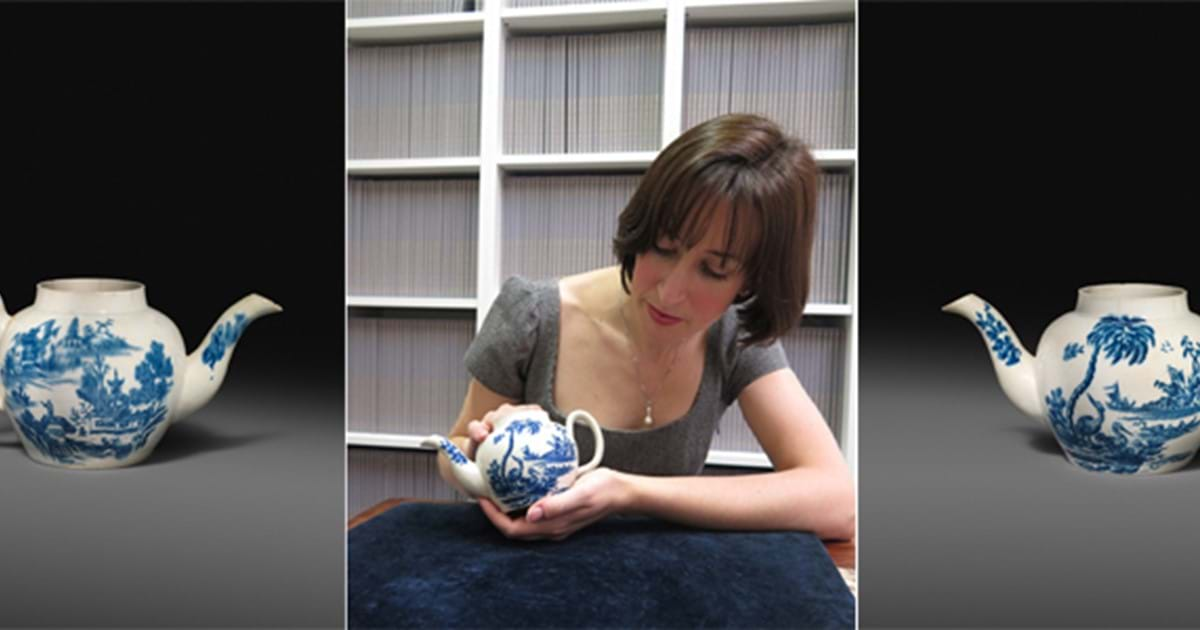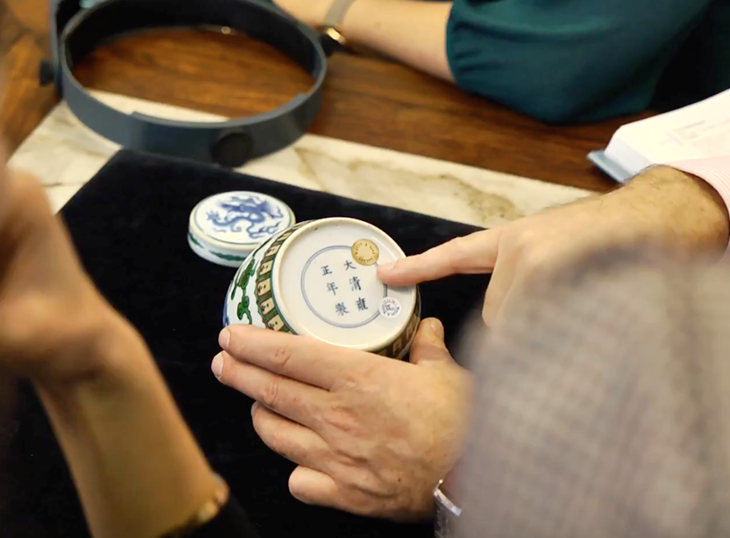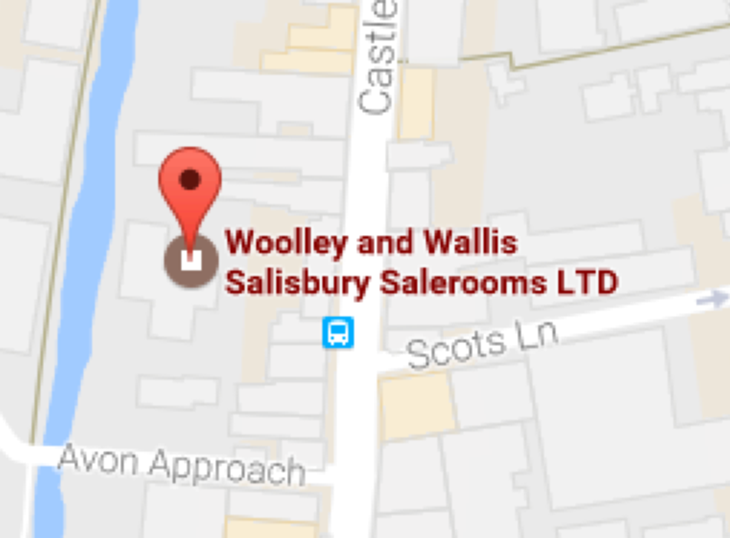John Bartlam Teapot Discovered by Woolley and Wallis
19th February 2018John Bartlam was a Staffordshire potter who left England around 1763 and set up business in South Carolina. In this talk, we hear about his life and business in Cain Hoy and Charleston, the palmetto stylised porcelain he is known for and how his contemporaries, including Wedgwood, viewed the American trade the mid-1700s.
A fascinating find, the teapot is only the seventh piece of Bartlam porcelain to have been unearthed, with the other six now residing in the US, spread between private collections and museums. One of the pieces; a saucer bearing the same unusual blue transfer-printed palm tree and crane design found on the teapot, was originally illustrated in a 2003 catalogue of Isleworth pottery, as was a teabowl which has since been definitively re-attributed to John Bartlam.
The teapot, acquired from a general sale by a private client, was bought for £15 and thought to be Isleworth pottery. However, in an exciting twist it was discovered to in fact be constructed of a very low fired soft-paste porcelain, and features the same palm-style tree and crane design on one face as the previously discovered saucers. As such, it is only the seventh recorded piece of Bartlam porcelain to come to market, the second recorded at auction and the only known Bartlam teapot, making it the first recorded American teapot to have been discovered. It is being offered for sale with a starting price of £10,000, which it is hoped to exceed.
John Bartlam (1735-1781) and his family left the family home in Stoke-on-Trent, Staffordshire to establish a business as a potter in the then colony of South Carolina, at the first of his two factory sites in the town of Cain Hoy. The north of England had at the time a thriving export trade with the English colonies in America – Bartlam believed he could manufacture high-quality ceramics in situ, saving transportation costs while enjoying a captive market. As such, he became the first known manufacturer of American porcelain, beating Philadelphia based contemporaries Bonnin and Morris by around five years.



